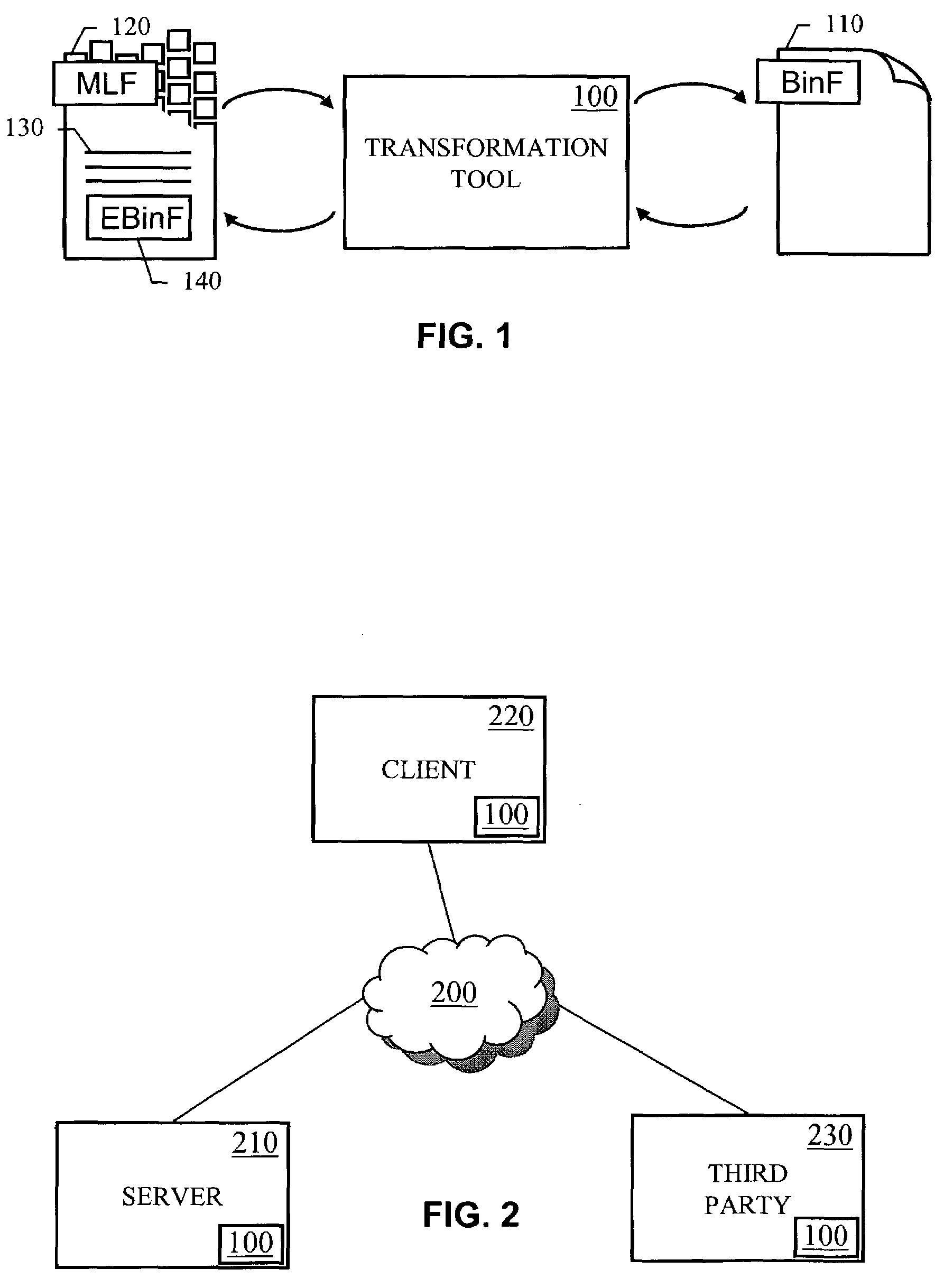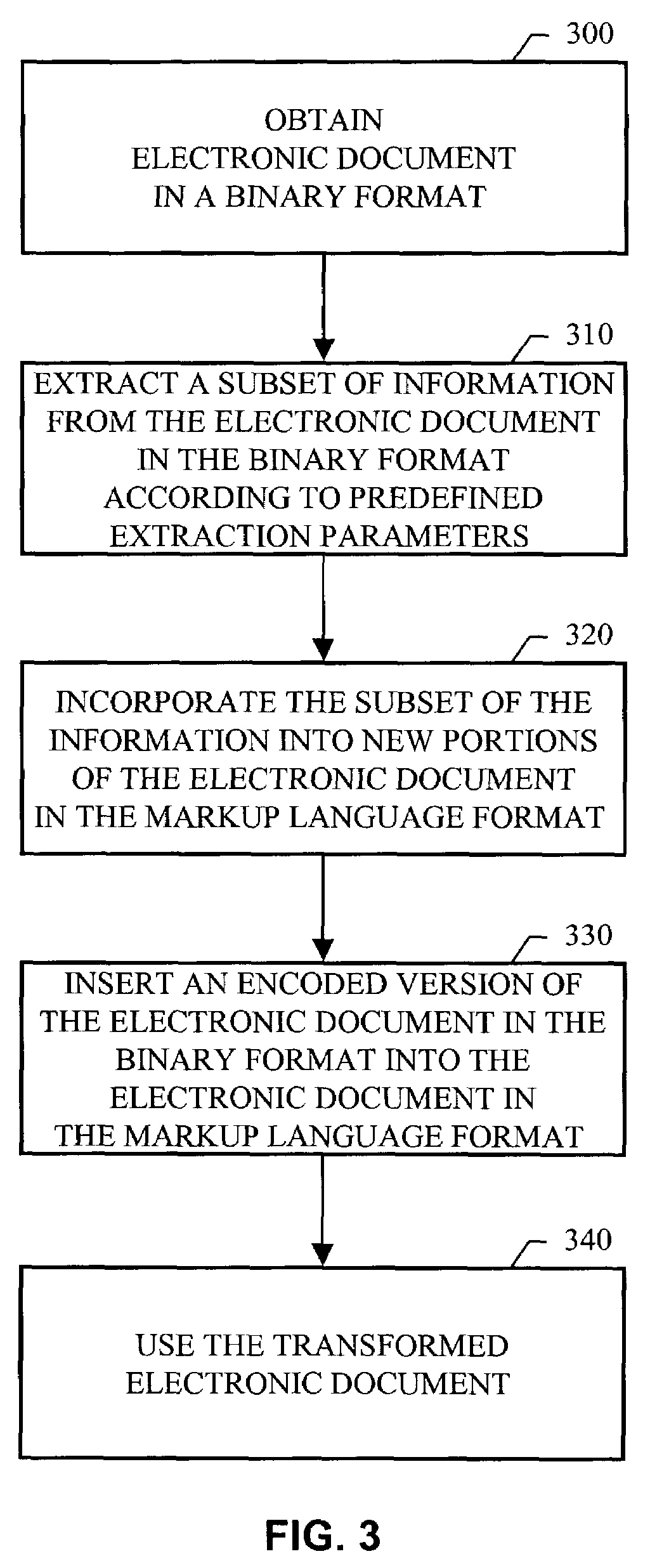Reversible document format
a document format and document format technology, applied in the field of document formats and format conversion, can solve the problems of lack of versatility, loss of information, limited flexibility in how information is accessed, etc., and achieve the effects of convenient transformation and use of reversible documents, convenient deployment, submission and management, and convenient transaction
- Summary
- Abstract
- Description
- Claims
- Application Information
AI Technical Summary
Benefits of technology
Problems solved by technology
Method used
Image
Examples
Embodiment Construction
[0030]As used herein, the terms “electronic document” and “document” mean a set of electronic data, including both electronic data stored in a file and electronic data received over a network. An electronic document does not necessarily correspond to a file. A document may be stored in a portion of a file that holds other documents, in a single file dedicated to the document in question, or in a set of coordinated files.
[0031]FIG. 1 is a block diagram illustrating reversible document format transformation. A transformation tool 100 can be provided by a vendor and can be a stand alone application or a plug-in to another application. The tool 100 can transform a binary format document 110 into a markup language format document 120 and back any number of times without loss of information. Because the transformation is lossless, the documents 110, 120 can be viewed as a single reversible document with two distinct formatting states. The binary format can be a predetermined final format ...
PUM
 Login to View More
Login to View More Abstract
Description
Claims
Application Information
 Login to View More
Login to View More - R&D
- Intellectual Property
- Life Sciences
- Materials
- Tech Scout
- Unparalleled Data Quality
- Higher Quality Content
- 60% Fewer Hallucinations
Browse by: Latest US Patents, China's latest patents, Technical Efficacy Thesaurus, Application Domain, Technology Topic, Popular Technical Reports.
© 2025 PatSnap. All rights reserved.Legal|Privacy policy|Modern Slavery Act Transparency Statement|Sitemap|About US| Contact US: help@patsnap.com



